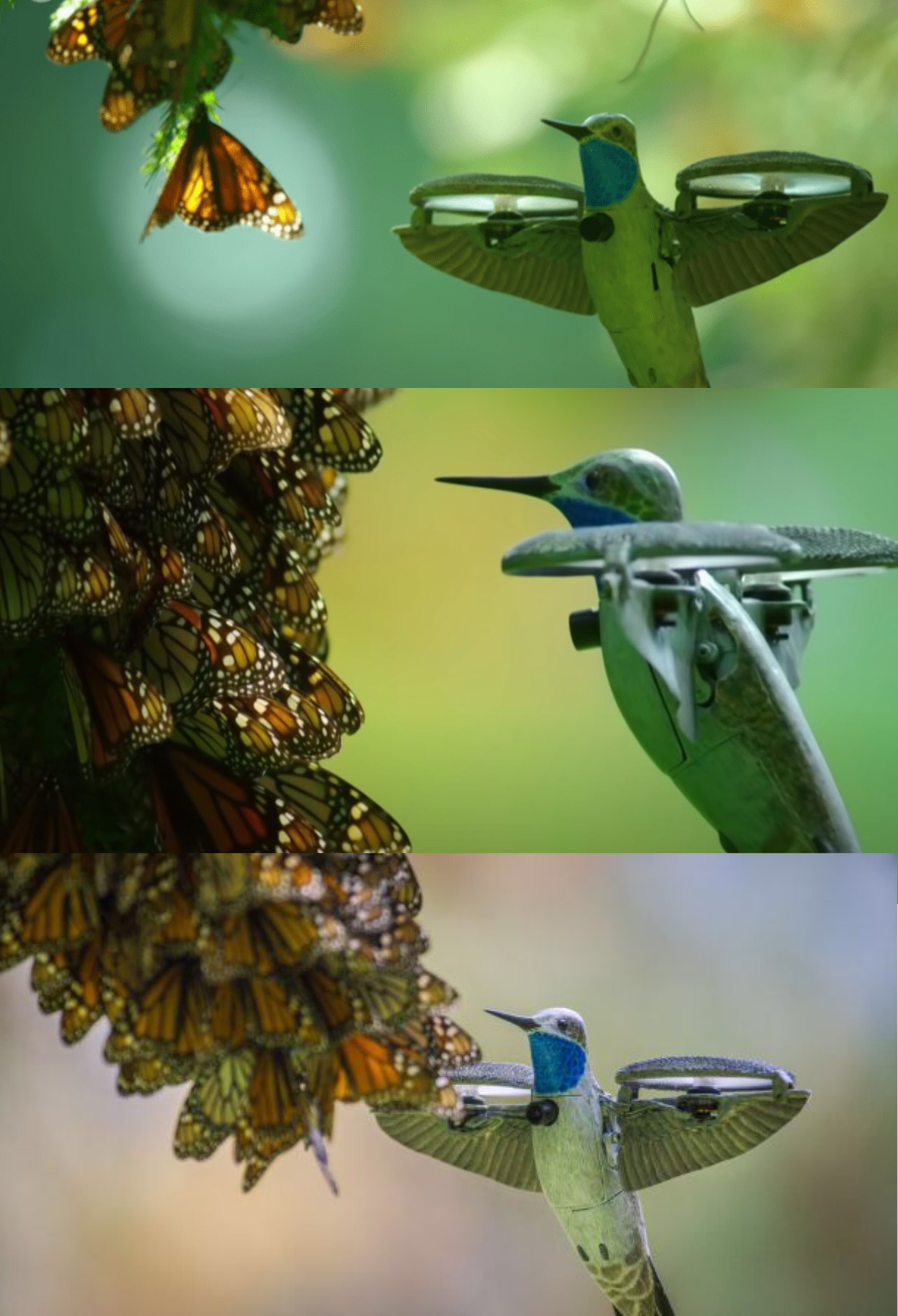Historic agreement to conserve millions of acres for Monarch butterflies and other pollinators across the US, plus breathtaking footage of a Monarch swarm captured by a “spy-hummingbird” drone.
Efforts to stem the decline of monarch butterflies takes giant leap forward
A new public-private partnership that includes 45 companies and the US Fish and Wildlife Service (FWS) will prove “a huge boost” to stem the loss of monarch butterfly habitat in North America. Officials estimate as many as 2.3 million acres of roadsides and utility lands may be involved in the agreement, becoming habitat for monarchs and other pollinators.

Historic Deal Will Conserve Millions of Acres for Monarch Butterflies and Other Pollinators
One of the great animal migrations on our planet, among such astonishing displays of nature on the move as the wildebeest in Africa, the Caribou of the Arctic, and the salmon run in the Pacific Northwest, has to be the incredible 3,000-mile flight of Monarch butterflies.
However, recent decades of development along their migration corridors have impeded the ability of these fragile creatures to complete their journey to and from Mexico through the western United States and Canada.
An article by GoodNewsNetwork reports that a recent effort by the FWS in partnership with the University of Illinois-Chicago has created a program for protecting habitat along vital migration corridors for the charismatic insects, which leave their summer breeding ground in the northwest US and Canada to travel all the way to central Mexico before resting on the peaks and summits of mountains.
“Completing this agreement is a huge boost for the conservation of monarch butterflies and other pollinators on a landscape scale,” said Aurelia Skipwith, Director of the U.S. Fish and Wildlife Service.

Unprecedented agreement seen as preemptive strike
Participants to the agreement which include landowners, farmers, transportation and energy companies, and more, will carry out conservation measures to reduce or remove threats to the species and create and maintain habitat annually. Although this agreement specifically focuses on monarch habitat, the conservation measures will also benefit several other species, especially pollinating insects.
Much of this work will take place along the sides of highways and other roads, as well as under hydro lines, and around other energy infrastructure; which may not seem like prime wildlife habitat but can actually be extremely useful both for wildflowers and other plants which pollinators rely on, and for linking fractured habitat zones.
Officials estimate that as many as 2.3 million acres of roadsides and utility lands may be involved in the agreement, becoming habitat for monarchs and other pollinators.
The agreement itself is a movement in response to an approaching decision by the FWS regarding a potential Endangered Species Act listing for the monarch butterfly, a legal status of protection that has been known to be notoriously frustrating for sectors big and small, public and private.
By involving 45 various companies across sectors like transportation and energy, and by engaging public landowners in monarch conservation, a potential listing can be avoided.
“By engaging early in voluntary conservation, utilities and departments of transportation can avoid increased costs and operational delays as a result of a potential listing. This provides tremendous value to industry and will also yield big benefits to the monarch butterfly,” said Iris Caldwell, program manager of the University of Illinois-Chicago’s Energy Resources Center, which will administer the agreement.
“The effort is unprecedented in terms of its cross-sector participation and geographic extent,” reads the monarch CCAA page of the Rights-of-Way as Habitat Working Group who specialise in developing land adjacent to energy and transportation infrastructure into prime habitat – usually for pollinators.
“The agreement spans the entire contiguous 48 states and is expected to encompass millions of acres of habitat.”
Source: GoodNewsNetwork

‘Spy’ Hummingbird Drone Captures Breathtaking Video from Inside a Monarch Butterfly Swarm
The PBS show Nature recently released a clip from its ‘Spy in the Wild’ series that will leave you speechless. Using a “spy” drone disguised as a hummingbird, they captured incredible footage of 0.5 billion monarch butterflies swarming as the weather warms. The footage was captured in the heart of a grove, buried deep in the mountains of Mexico.
As it begins, millions of Monarch butterflies can be seen sleeping, huddling together to keep warm. But as the weather warms up and hits a critical tipping point, they begin to leave their perches—first as a trickle, and then as an all-out billion-winged swarm.
The resulting footage (below) is both spectacular to behold and apparently quite rare: “[This is] a spectacle that has rarely been filmed,” says the narrator, “and our spy is harmlessly in the very heart of it.”
Source: PetaPixel

HOW TO HELP BEES: 8 PRACTICAL ACTION STEPS YOU CAN TAKE TO BEFRIEND BEES AND MAKE A REAL DIFFERENCE
Ok, so they aren’t butterflies, but the news is abuzz with hair-raising headlines about global bee health. What can we as individuals actually DO to help our little friends? The good news is there are plenty of ways you can get involved. Here are 8 ways YOU can do your bit to help bees wherever you live. Many of these tips apply to all pollinators, including butterflies.
